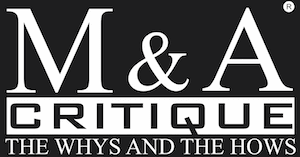Berlin and Paris are working to change European competition rules to facilitate large cross-border mergers, after the European Union blocked Siemens and Alstom from merging their rail businesses on Wednesday.
But there is a long history of failed Franco-German mergers, especially those motivated by a political agenda to create European champions rather than by business logic, including previous Siemens-Alstom encounters.
Cultural differences over the role of the state, wrangling over where job cuts should fall and inability to agree who should be in charge have more often than not outweighed any desire to cooperate.
Even the most prominent Franco-German industrial success, EADS-Airbus, has been beset by internal rivalries.
Below the political radar, cross-border deals between German and French companies have increased in number and value over the last decade. The peak was reached in 2016 when a total of 122 deals were completed with a combined value of $19.6 billion, according to Refinitiv data, up from 64 deals with a total value of $1.8 billion in 2009.
Here are some examples:
1987-1999 FRANCE TELECOM-DEUTSCHE TELEKOM
The then state-owned telecoms operators flirted with merging for years, establishing joint ventures and buying cross-holdings, until their alliance ended abruptly when Deutsche Telekom attempted to buy Telecom Italia in 1999, without consulting its French partner. In 2010, the two companies merged their UK operations and launched the joint venture Everything Everywhere. EE was acquired by Britain’s BT in 2016.
1970 AIRBUS
Airbus Industrie was formed in 1970 by the governments of France and Germany, who had begun discussions in 1965 to form a consortium to build a European short-haul jet. It was set up as a so-called Economic Interest Group, with 50 percent of the funding coming from France’s Aerospatiale and 50 percent from Germany’s Deutsche Airbus. It is now the main global rival to Boeing. Power struggles between the French and German factions have gripped the company for much of its history. In 2012, the company, known at the time as EADS, proposed to merge with Britain’s BAE but was turned down by the German government.
1999 AVENTIS
The French pharmaceutical company was founded through the merger of Germany’s Hoechst and France’s Rhone-Poulenc, the first transnational merger to combine large rivals from France and Germany. It was acquired in 2004 by France’s Sanofi, with French governmental support.
2000-2007 EURONEXT-DEUTSCHE BOERSE
Euronext was created in 2000 out of a merger of the Amsterdam, Brussels and Paris stock exchanges and later acquired the Lisbon and Irish stock exchanges. In 2004-2005, there were negotiations about grouping together with Deutsche Boerse and the London Stock Exchange. In 2006, Deutsche Boerse bid unsuccessfully for Euronext. In 2007, Euronext merged with New York’s NYSE. The company was subsequently acquired by IntercontinentalExchange, which spun off Euronext.
2004 ALSTOM-SIEMENS
Nicolas Sarkozy, French finance minister at the time, pushed through a 4.4 billion-euro ($5 billion) bailout of Alstom, rescuing it from bankruptcy and preventing Siemens from acquiring Alstom’s large turbine business.
2014-2015 ALSTOM-SIEMENS
Siemens entered a bidding war with General Electric for Alstom’s power-turbines business in 2014, after the French government encouraged a European counterbid. Siemens offered to swap its trains business plus cash for Alstom’s global power assets. After forcing GE to raise its bid, Siemens walked away and the business was acquired by GE in 2015.
2017 OPEL-PSA
German car maker Adam Opel AG was sold by General Motors to Peugeot maker PSA in 2017. The deal has so far been a success with PSA CEO Carlos Tavares making the Opel business, including British unit Vauxhall, profitable for the first time in many years.
Source: Reuters.com